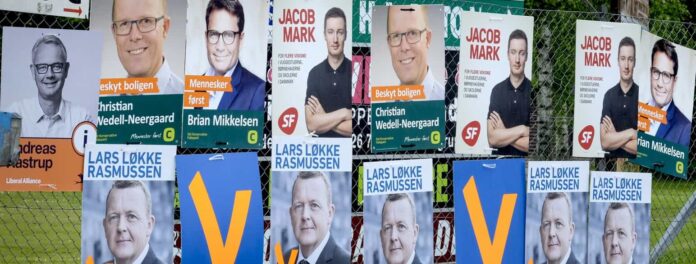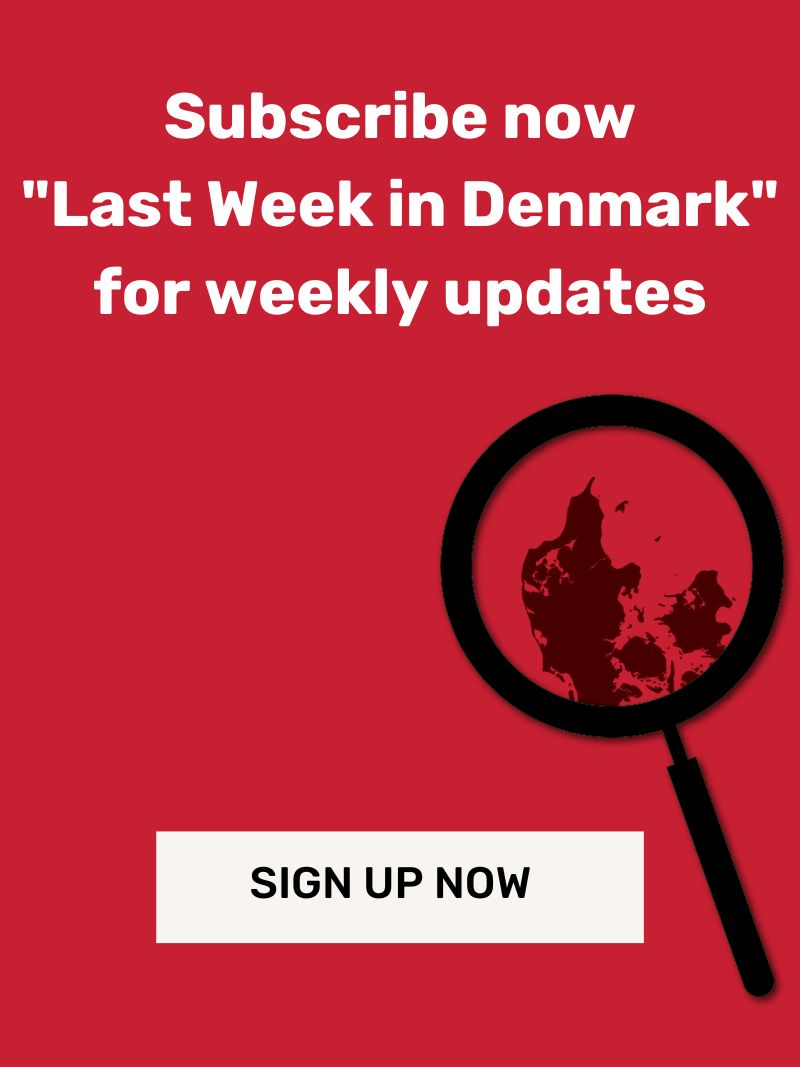On the 6th of October, prime-minister Mette Frederiksen called for parliamentary elections, earlier than expected (after only 3 years of mandate). The election date is 1st November and the 14 political parties that managed to gather the 20.000 needed signatures will be present on the voting ballot.
What do we vote for?
To decide the 179 members of the Danish Parliament aka Folketinget. By proxy, to decide the new government of Denmark (which is voted by the Parliament).
What is the Danish Parliament?
The Folketing passes all legislation, controls how the government administers the legislation, and adopts an annual budget for the state.
How is a new government formed?
The current prime minister (Mette Frederiksen) can continue with a new 4-year mandate if there is not a majority against (90+ members) in the Danish Parliament. If the current prime minister has a majority against them, a new prime minister needs to be found.
The Queen calls in the leaders of the elected political parties to advise on who should be prime minister (it’s called the Queens Round). Then she nominates one of them as the person responsible to form a government and become prime minister. The Danish Parliament needs to not have a majority against. If this doesn’t work, the process is repeated until a prime minister is found.
Who can vote?
Unfortunately for us, for parliamentary elections, only Danish citizens can vote.
Does it matter for me as an International?
Yes. A lot of laws that directly affect our lives are decided in the Danish Parliament.
What can I do if I cannot vote?
You can stay informed. See what candidates or political parties deserve your support. You are allowed to be a member of a political party or to express political opinions without Danish citizenship. You can join the campaign of a candidate (they need all the help they can get – poster hanging, brochure distribution, street events) that wants to support our cause in the Danish Parliament.
How do I find a candidate that wants to support our cause?
Check out the posters in your area. Google those people and see when they are in your proximity. Go and ask them directly. If you are happy with their answer, offer your help. Reward the candidate for being positive towards us.
What are the possible governments?
- A red government led by Mette Frederiksen (which contains only parties from the red camp).
- A blue government led by either Soren Pape Poulsen or Jakob Ellemann-Jensen (which contains only parties from the blue camp).
- A red-blue government led by either Mette, Soren or Jakob (which contains parties from both the red and blue camp).
What is a red camp and a blue camp?
In Denmark, it is very difficult for a single party to obtain the majority in the Danish Parliament. I would even say impossible. So, the larger parties need to rely on smaller parties as coalition partners to get the prime minister seat. Over time, the parties that looked at the social democrat candidate as their prime minister candidate became labeled as “red parties” and part of the “red camp” and the parties that looked at the liberal (Venstre) candidate as their prime minister candidate became labeled as “blue parties” and part of the “blue camp”. Parties that are new and don’t declare who they will point to as their prime minister candidate are outside of the camps.
The political parties aka the players for the Danish Game of Thrones
The Red Parties aka Red Camp

Socialdemokratiet – The Social Democrats
48/179 members of the Parliament; 27,3% (1,9% increase since September)
Leader: Mette Frederiksen
The uncontested leaders of the red camp since the inception of the concept. The red camp has always pointed towards a social democratic prime minister. The Social Democrats are one of the oldest parties in Denmark (1871) and have strong roots in the working class and the trade unions. They can be identified on posters by their red color and the letter A.
Status: Despite going from one crisis to another during Mette Frederiksen’s mandate, the party stands at roughly the same support as the result obtained in 2019. In fact, after a summer plagued by the mink scandal, the party is now on an upwards trend. Experts say that the current situation in Denmark (inflation, energy, and war crisis) might determine the voters to rally around Mette Frederiksen as“a safe hand during a crisis”.
Typical voter: 60% of the A voters are women, while 40% are in the age group 50 to 69 years old. 20% of the voters have a worker background. It used to be the party voted by the workers in factories/trade union members. Today, it is more the party of the lower middle class.
Political platform: The party is positioned center-left with a social democrat ideology. According to their program, they are the safe choice during unstable times. The focus for this election is on keeping Denmark stable; obtaining independence from Russian gas,making the green transition faster and getting more people into jobs that support our welfare (elderly care, healthcare, childcare, etc.).
Preferred type of government? Red-blue government over the center with Mette Frederiksen as prime minister.

Radikale Venstre – The Social Liberals
16/179 members of the Parliament; 4,9% (0,3% increase since September)
Leader: Sofie Carsten Nielsen
The Social Liberals is one of the four old parties of Denmark (with a history longer than 100 years). It was founded in 1905 as a split from Venstre, by the anti-militarist movement. With strong roots among the intellectuals and entrepreneurs, the party represented for many decades the progressive side of society (criticism of religion, opposition to social norms, criticism to Victorian sexual morality, anti-militarism). You can identify them by the use of magenta color and the letter B.
Status: The Social Liberals enter the elections greatly weakened. Their ultimatums triggered early elections during a time of multiple crises and that didn’t go down well with their voters. They stand to lose half of their members in the Parliament. However, their role in triggering these elections will keep them included in all the discussions and that could lead to more voters.
Typical voter: The core voter group is highly educated progressive young people, intellectuals and company leaders. 33% of the voters are young (18 to 29 years old); 25% have finished a master’s degree; 30% are leaders.
Political platform: The party is positioned on the center to center-left with a social liberal ideology. According to their program, they want to focus on green transition (biodiversity law, 80% reduction of CO2 until 2030); children and youth care (invest in better and more teachers and pedagogues) and to make it easier to bring workforce from abroad. The main areas of interest are children/youth; environment/climate and healthcare.
…and for the internationals
- Danish Citizenship given at birth, regardless of the parent’s background.
- Make it easier for non-Europeans married to Danes to get a permit to live in Denmark.
- No deportation of refugees.
- European Marshall Plan to develop Africa.
Preferred type of government? Red-blue government over the center with Mette Frederiksen as prime minister. They want to be part of the government.

SF – The Green Left (Socialist Party)
14/179 members of the Parliament; 8,1% (0,5% increase since September)
Leader: Pia Olsen Dyhr
The Green Left was founded in 1959 as a split from the Communist Party. With strong roots in the peace and anti-NATO movements during the Cold War, the party today has changed into a pro-EU green party. You can identify them by the use of both red and green colors and the letter F.
Status: The Green Left enters the campaign in good form. They are gaining ground in the opinion polls and are ready to be part of the next government. Despite being mocked as Socialdemokratiet 2.0, the party has overcome the meltdown that followed its last presence in government (2014).
Typical voter: The party’s core base is families with children that have a lower income. 66% of the voters are women. 40% of the voters are highly educated; 50% of the voters are part of the middle class.
Political platform: The party is positioned on the left with a democratic socialist ideology. According to their program, they want to focus on children/youth care (more teachers and pedagogues; less stress on students); environment/climate (nature law), and on the protection of the welfare society (higher salaries for welfare workers; less administration). The main areas of interest are Children/Youth; Environment/Climate and Healthcare.
…and for internationals
- Stop the deportation of refugees.
- Respect the promise of taking the quota of 500 refugees every year.
- Get more women with ethnic backgrounds into the job market (fight social control).
Preferred type of government? A red government with Mette Frederiksen as prime minister. They want to be part of it.

Enhedslisten – The Red-Green Alliance
13/179 members of the Parliament; 6,7% (decrease of 1,4% since September)
Leader: Mai Villadsen
In 1989, the communist and socialist parties united under the Red-Green Alliance. Since then, they represented the left-wing politics of the red camp. You can identify them by their red color and the letter Ø.
Status: The Red-Green Alliance enters the elections with a stable stronghold and a chance to obtain some extra members of the Parliament. There will be hard competition on the left from the Frie Gronne and Alternativet. Especially in Copenhagen. They are hoping that the desire of Mette Frederiksen to lead a red-blue government will push some social democrat voters into their arms.
Typical voter: Their core voter base comes from the poor people in the big cities. Their voters have the lowest incomes in Denmark. 25% are young (18 to 29 years old). 66% are part of the lower class.
Political platform: The party is positioned on the far-left with a socialist ideology. According to their program, they want to focus on building a green future, helping people overcome the inflation crisis (1 billion DKK to increase salaries of welfare workers; companies that earned more because of war and inflation should be extra taxed; support for families with children) and helping immigrants. The main areas of interest are environment/climate; healthcare and immigrants.
…and for the internationals
- Danish citizenship given at birth, regardless of parent’s background.
- Stop the deportation of refugees.
- No to the Danish Asylum Center in Rwanda.
- Simplify the process of obtaining Danish citizenship.
Preferred type of government? A red government with Mette Frederiksen as prime-minister. They are against the idea of a red-blue government.
The Blue Parties aka Blue Camp

Venstre
43/179 members of the Parliament; 12,7% (0,8% increase since September)
Leader: Jakob Ellemann-Jensen
The oldest party in Denmark, founded in 1860 by farmers, it transitioned in the 1960s towards representing small and medium business owners. They are the traditional leader of the blue camp. You can identify them by their navy-blue color and the letter V.
Status: The party is weakened. They stand to lose almost half of their members of the Parliament. For the first time, there is a challenger to the prime minister candidate usually nominated by Venstre for the blue camp. In the last two years, two parties broke out from Venstre (Moderaterne and Danmarksdemokraterne), founded by former top Venstre leaders. However, during the campaign, voters tend to listen to the political proposals and there Venstre stands a chance to recover.
Typical voter: The core voter base is among the farmers and the business sector. 25% of the voters are over 70 years old. 40% have a vocational background; 10% are entrepreneurs.
Political platform: The party is positioned on the center-right with a conservative liberal ideology. According to their platform, their focus is on better healthcare (reduce waiting times, hire more family doctors, more staff); economic responsibility (tax reductions for hard working people) and the development of green solutions for the benefit of the Danish economy. The main areas of interest are the economy, healthcare, and the environment/climate.
…and for the internationals
- Deportation of criminal immigrants.
- Compulsory to learn Danish, adopt Danish values and be economically independent.
- Lower government benefits for immigrants (SU; unemployment benefits; social help).
Preferred type of government? A blue government with Jakob Ellemann-Jensen as prime minister.

Konservative – The Conservatives
12/179 members of the Parliament; 11,2% (decrease of 2,2% since September)
Leader: Søren Pape Poulsen
At the beginning of Danish democracy, two parties competed for political power – Venstre (the farmers) and Højre (the landowners and the nobility). The Conservatives are the modern expression of Højre (renamed in 1916) and as expected, it has strong roots among the old rich families of Denmark. They can be identified by their dark green color and the letter C.
Status: The Conservatives are entering the elections on a downward trend in the opinion polls, after weeks of scandals related to their leader, Soren Pape Poulsen. Since Soren announced that he wants to be a prime ministerial candidate, the media has looked into every nook and cranny.
Typical voter: Their core voter base is the upper class of Denmark. Their voters have the highest income in Denmark. 25% of the voters are over 70 years old. 25% are leaders.
Political platform: The party is positioned on center-right with a conservative ideology. According to their program, they want more privatization in elderly care, lower taxes (remove the top tax and inheritance tax; lower corporation tax; higher tax deduction; reduce state tax income by 40 billion until 2030), and better security (more police; harsher punishments). The main areas of interest are the economy, healthcare, and immigration.
…and for the internationals
- Deportation of criminal immigrants.
- Compulsory to learn Danish and for immigrants to be independent economically.
- Secret Service background check on citizenship applications.
Preferred type of government? A blue government with Søren Pape Poulsen as prime minister.
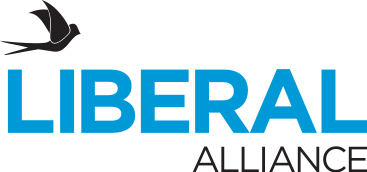
Liberal Alliance
4/179 members of the Parliament; 4,1% (1,2% decrease since September)
Leader: Alex Vanopslagh
Another relatively new party, founded in 2007 as a split from Radikale Venstre and Konservative, by Nasser Khader. They represent the libertarian current in Denmark and the recently successful entrepreneurs who want lower taxes. You can identify them by their use of navy blue and gold colors and the letter I.
Status: Liberal Alliance enters the elections with strong support among the 18 to 29 years old segment. Their young leader knows how to build an audience on TikTok and that rescued a party that was almost history.
Typical voter: Their core voter base is among successful entrepreneurs and young people. 50% of the voters are between 18 and 29 years old; 60% are men.
Political platform: The party is positioned on the right with a libertarian ideology. According to their program, they want to focus on lowering the taxes (remove top tax; reduce income tax to max.40%; raise the tax deductions to 7000 DKK); better and cheaper welfare (through privatization of healthcare and education) and protecting the rule of law (start an investigation against Mette Frederiksen about the mink case). The main areas of interest are public administration, taxes and economy.
…and for internationals
- Better treatment of the internationals already in Denmark.
- Better conditions for international workforce – attract more to Denmark.
- Asylum seekers should live outside of Denmark.
Preferred type of government? A blue government without mentioning under which blue prime minister. They would also consider joining a red-blue government with them as part of it.

Kristendemokraterne – The Christian Democrats
0/179 members of the Parliament; 0,4% (0,1% increase since September)
Leader: Marianne Karlsmose
Another party born during the Cold War, they were founded in 1970 by the anti-abortion and anti-pornography movement. Today they stand for the traditional family and a greener Denmark. You can identify them by their orange color and the letter K.
Status: In April 2022, The Christian Democrats went over 2% in the opinion polls. It looked like they would break the 21 years old curse that kept them away from the Parliament. Fast forward to today, they lost their young and charismatic leader Isabella Arendt (she went to Konservative) and their only member of the Parliament (which they got via transfer from Radikale Venstre) Jens Rohde decided to not run again, and leave the party. Chances are they will also miss this train.
Typical voter: Their core voter base is among the religious communities. 60% are women; 50% are public employees; 20% are over 70 years old.
Political platform: The party is positioned on the center-right with a Christian democratic ideology. According to their program, they want to focus on children and family first (more international workforce, better psychiatry, and conditions for the disabled), protect the people with other ethnic backgrounds and support nuclear energy. Main areas of interest are psychiatry, children/youth and environment/climate.
…and for internationals
- Denmark should take the quota of 1000 refugees every year.
- 500 million DKK investment in the Danish language schools.
- Refugees should be allowed to obtain permanent residence if they developed a connection to Denmark (language, education, work, society participation, rule of law).
Preferred type of government? A blue government with (most likely) Søren Pape Poulsen as prime minister.
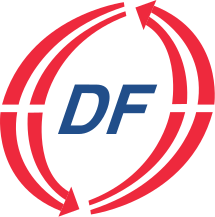
Dansk Folkeparti – The Danish People’s Party
16/179 members of the Parliament; 1,8% (0,1% decrease since September)
Leader: Morten Messerschmidt
A post soviet party, founded in 1995 as a split from the Progress Party (Anti-Taxation). They dominated the anti-immigration agenda for more than two decades by influencing negatively the historical parties of Denmark and making them less welcoming towards internationals. You can identify them by their blue and red colors and the letter O.
Status: The Danish People’s Party is fighting for survival after the opinion polls placed them under the 2% minimum percentage to enter the Parliament. This could be their last presence in a parliamentary election. Quite an unceremonious end for a party that for more than two decades has influenced Danish politics in relation to refugees and immigrants.
Typical voter: Their core voter base is among older and lower-educated people. 25% of the voters are over 70 years old; 33% are outside the job market, like unemployed, pensionist; 40% of the voters were low educated;
Political platform: The party is positioned on the far-right with a social nationalist ideology. According to their program, they want to focus on lowering VAT on food, gasoline, heat, and electricity; making a new elderly law, and getting out of international conventions. The main areas of interest are immigration, elderly care and healthcare.
…and for the internationals
- Deportation of criminal immigrants.
- Total stop of welcoming asylum seekers.
- Permanent border control of all borders.
- Ban Muslim symbols in public institutions.
Preferred type of government: A blue government with (most likely) Søren Pape Poulsen as prime minister.
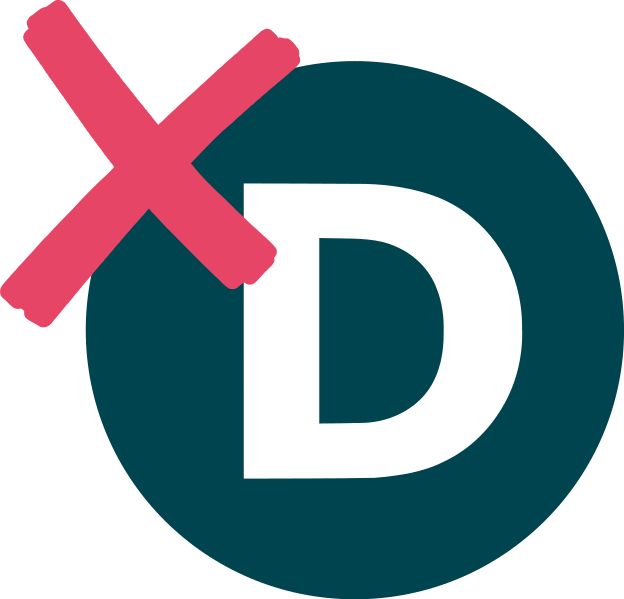
Nye Borgerlige – The New Right
4/179 members of the Parliament; 6,3% (1,7% increase since September)
Leader: Pernille Vermund
A relatively new party, founded in 2015 as a split from Konservative. They joined DF in competing for the anti-immigration voters with a twist, an ultra-liberal economic policy. You can identify them by their teal color and the letter D.
Status: The New Right was standing to win voters from the meltdown of DF, and they did so for a while, when they reached almost 10%. However, the Danish Democrats entered the stage recently and that pushed them back to under 5%. They need to fight hard against the Danish Democrats, in order to not become the next right-wing party that disappears.
Typical voter: Their core voter base is among men working in low paid jobs. 66% of the voters are men; 40% are between 30 and 49 years old; 40% have a vocational education
Political platform: The party is positioned on the far-right with a nationalist libertarian ideology. According to their program, they want to focus on making tougher laws against immigrants, reduce spending in the public sector (reduce with 6 billion DKK yearly spending) and close job centers.
…and for internationals
- Deportation of criminal immigrants.
- Limit the number of people coming from Muslim countries.
- Stop spending public money on integration.
- Immigrants need to be economically independent.
Preferred type of government: A blue government with Søren Pape Poulsen as prime minister.

Danmarksdemokraterne – The Danish Democrats
0/179 members of the Parliament; 10,3% (0,5% decrease since September)
Leader: Inger Støjberg
The newest party in Denmark, it was founded this summer (June) by the former Venstre minister and convict Inger Støjberg. This is the first party created in Denmark by a person that has been condemned to jail. They are so new that it is difficult to pinpoint their politics (besides being aggressive against internationals and people from Copenhagen) so they rely heavily on the popularity of Inger. You can identify them by their blue color and the letter Æ.
Status: The Danish Democrats are ready for the elections, after massive transfers of politicians from DF and Venstre. Already dubbed as DF 2.0, the Danish Democrats will most likely lead to the end of DF.
Typical voter: The party has less than 6 months. It is difficult to assess their core voter groups.
Political platform: The party is positioned on the far-right with a national populism ideology. According to their program, they want to focus on immigrants (assimilation into Danish culture), on Jylland (move public jobs away from Copenhagen) and on protecting companies from overregulation and bureaucracy. The main areas of interest are immigration, healthcare and economy.
…and for internationals
- Deportation of criminal immigrants.
- Harsher laws against immigrants.
- Lower unemployment benefits for immigrants.
- Immigrants should either integrate or leave.
Preferred type of government? A blue government with (most likely) Jakob Ellemann-Jensen as prime minister. They want to be part of it.
The center parties aka Non-Affiliated

Moderaterne – The Moderates
0/179 members of the Parliament; 3,7% (0,4% increase since September)
Leader: Lars Løkke Rasmussen
This is their first election as a new party, barely founded in June 2021 by former prime-minister Lars Løkke Rasmussen. The idea is to not be affiliated with either red or the blue camps. Instead to be able to negotiate with both sides and become the kingmakers of Danish politics. You can identify them by their purple color and the letter M.
Status: The Moderates are ready to become the kingmakers of the next government. Their positioning between the red and blue camps gives them the unique power of deciding who the next prime minister will be. That is if they manage to maintain the percentages from the opinion polls. They have a strong leader on their side, but a lot of inexperienced new politicians.
Typical voter: Low presence among young people; 60% of voters are men; 33% have a vocational background
Political platform: The party is positioned in the center with a social liberal ideology. According to their program, they want to focus on reforming the healthcare system (remove the regional governments; reduce waiting times; higher salaries for nurses); lowering the taxes for the unemployed and those with low income, increasing the tax on the rich; introducing a 4 month mandatory civic participation for young people and a cultural pass. The main areas of interest are economy, healthcare and environment/climate.
…and for internationals
- More respect for internationals in political debates.
- Better conditions for the workforce from abroad.
- A more fair immigration policy.
Preferred type of government? A red-blue government without specifying under which prime minister. They want to be part of it.
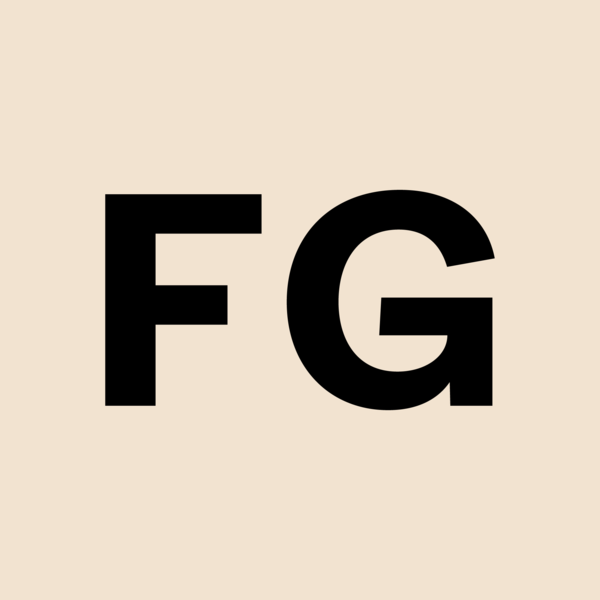
Frie Grønne – The Independent Greens
0/179 members of the Parliament; 0,7% (0,3% decrease since September)
Leader: Sikandar Siddique
A new party founded in 2020 as a split from Alternativet. This is their first parliamentary election. The party has the only leader with an ethnic background, and it has profiled itself as a defender of internationals and planet Earth. You can identify them by the beige color and the letter Q.
Status: The Independent Greens refused to merge with Alternativet (even though their leaders are former Alternativet politicians and Uffe Elbaek the founder of both Alternativet and Frie Gronne returned to Alternativet) and will prove to face the elections alone. They could be the surprise of these elections.
Typical voter: Their core voter base is young people and lower income people with an ethnic background. 60% of their voters are between 18 and 29 years old; 90% have a low income (under 200.000 DKK per year); 33% are students; 75% are renters.
Political platform: The party is positioned on the left with a progressive green ideology. According to their program, they want to focus on the fight against discrimination, to stop inequality (by introducing a tax on selling houses and a progressive wealth tax) and faster green transition (better collective transport, fewer cars, and a reduction of animal production by 95% until 2030). Main areas of interest are environment/climate, immigration and economy.
…and for internationals
- Danish citizenship given at birth, regardless of parent’s background.
- Automatic Danish citizenship after 7 years of living in Denmark.
- A quota of 5000 refugees per year.
- Transform the prison-like asylum seeker centers into more welcoming places.
Preferred type of government? A red government. They didn’t mention under which prime minister.
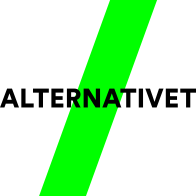
Alternativet – The Alternative
5/179 members of the Parliament; 1,3% (0,4% increase since September)
Leader: Franciska Rosenkilde
A relatively new party founded in 2013 as a split from Radikale Venstre. They wanted to reach citizens that never got into politics before and engage them through innovative political labs. You can identify them by their neon green color and the letter Å.
Status: The Alternative fight to reach the 2% minimum percentage to ensure another 4 years in the Danish Parliament. They recently merged with the Green Alliance (former Vegan Party), and they hope that will boost the party. Ever since their great success during the 2015 parliamentary elections (10 mandates as a new party), the party has been losing support.
Typical voter: Their core voter base is formed by young people. 50% of the voters are between 18 and 29 years old; 33% are highly educated; 10% of the voters are entrepreneurs.
Political platform: The party is positioned on the center-left with a progressive green ideology. According to their program, they want to focus on helping young people (better education and psychiatry), making the working week shorter (30 hours), and transforming agriculture into a green one (focused on less animal farming). The main areas of interest are environment/climate, healthcare, and children/youth.
…and for internationals
- 5 years residence permit for refugees and people that arrive under family reunification.
- Follow the UN recommendations regarding refugees.
- Turn the prison-like asylum seeker centers into welcoming places.
Preferred type of government? They didn’t decide who to support for prime minister.






